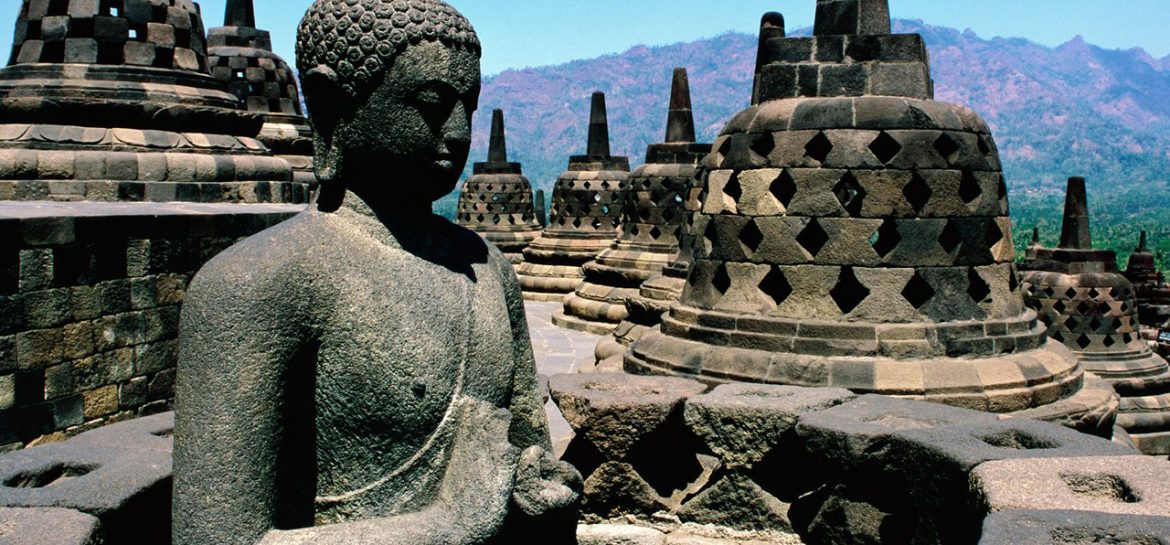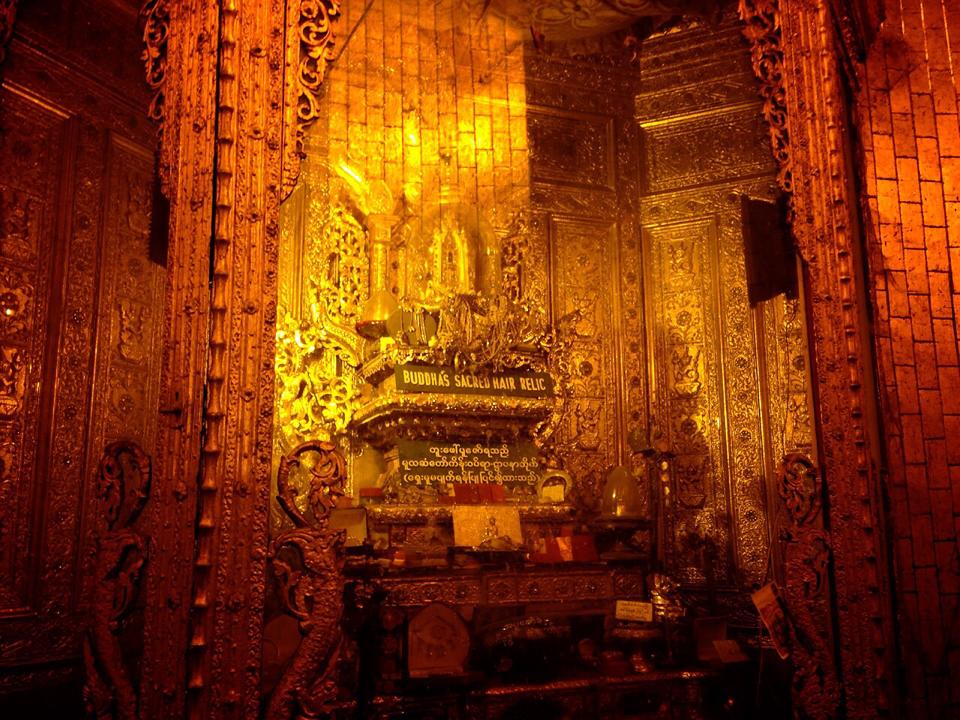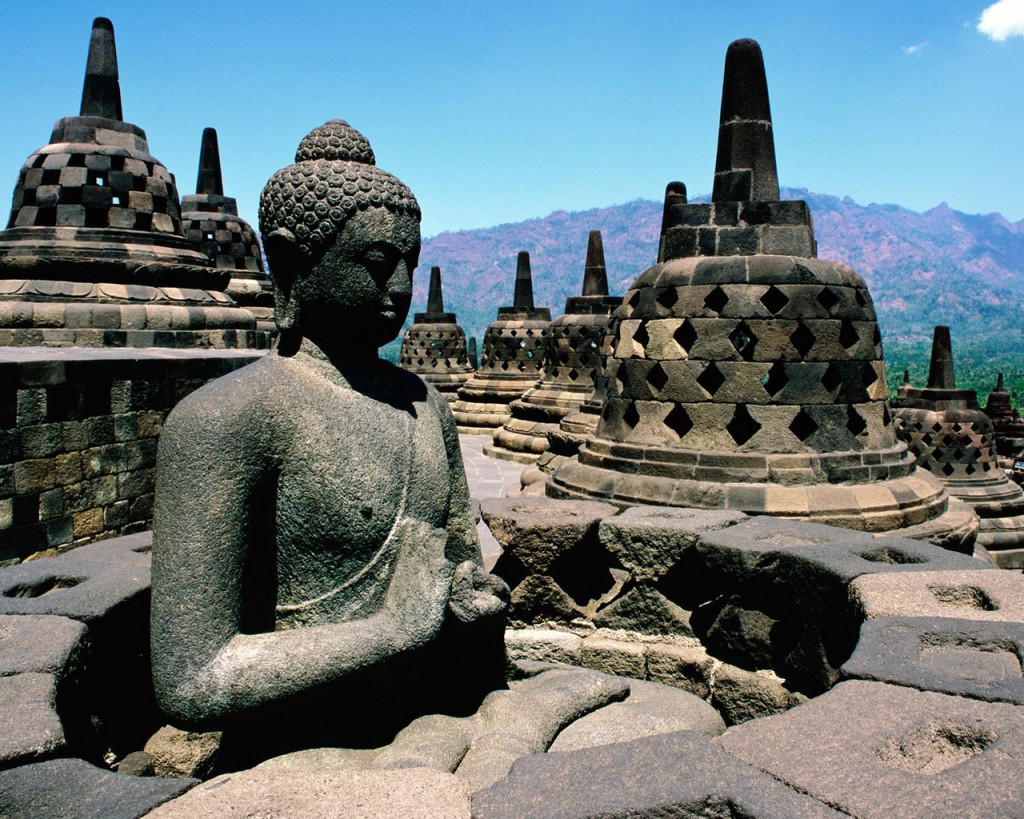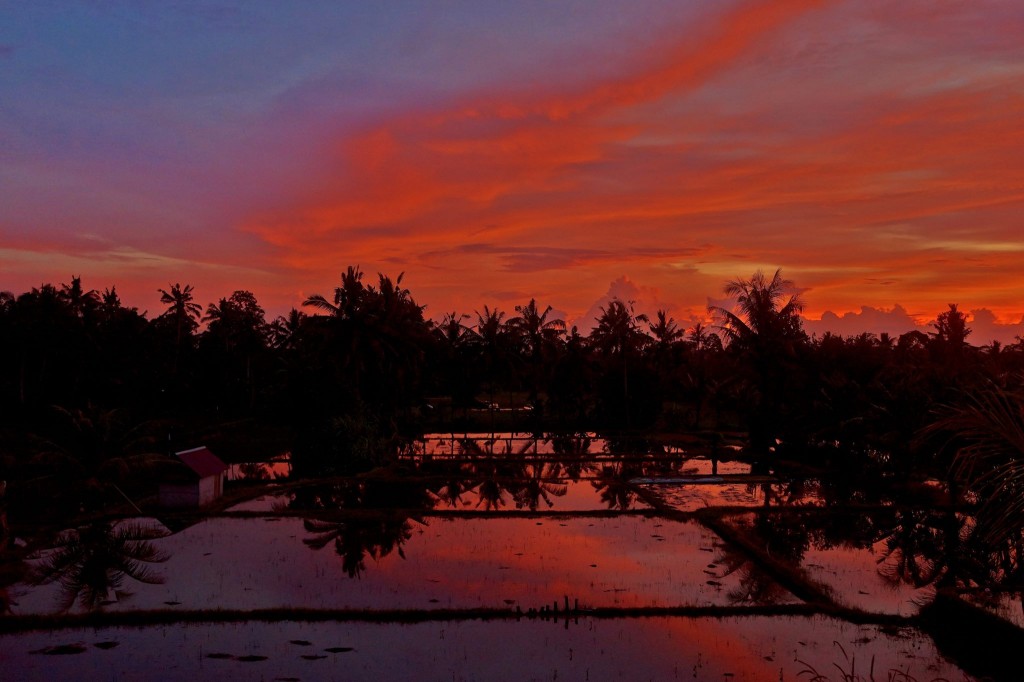
Destinationreport Asia-Pacific contributed by John Miles.
My days in Indonesia.
Bangkok, Angkor Wat be aware, Borobudur is coming.
Where and who is Borobur?
We booked a flight from Singapore to Yogyakarta and we were glad that it was a direct flight,
no stopover in Jakarta.
The airport is quite special, the international terminal building is a fraction of the size its domestic terminal. Only two international routes are processed there: Kuala Lumpur and Singapore.
I loved the international airport , so special.
Airports are just gateways, and I was here to see the Borobudur, the experience starts with being wrapped in a sarong. After all, it is a Buddhist temple and still a sacred place for Buddhist monks and devotees who travel to Yogyakarta on pilgrimage.
It’s spectacular to catch the sunrise, you should stay at the Manohara Hotel, managed by the Borobudur national park. They have a private gate for guests to enter the temple grounds to catch the sunrise at 5.30 am.
It’s hard to believe that Borobudur was constructed in the 8th Century, the architecture and artwork are incredibly intricate. Structurally, this UNESCO World Heritage Site consists of 10 levels: The lower levels are square bases while the top three are circular. From the air, Borobudur actually resembles a lotus flower. No joke.
After all, it took 100 years and several generations to complete, so the architectural plans had to be pretty detailed, our guide pointed to a mountain facing Borobudur that resembled the silhouette of sleeping man.
According to local myths and legends, he said, this man was the real architect and he built Borobudur in a day.
But where stories go, what was most fascinating to me was the bas-relief that has survived 1,300 years.
In an era where generations could not read or write, people came here to study these carvings to understand ancient texts and tales.
Our guide was a good storyteller. I learnt a lot from him and would highly recommend you get a guide for your tour, or the details will be lost on you. After listening to his fascinating stories, we took this long and steep stairway to the upper levels of Borobudur. We were told to climb all the way up without stopping. I didn’t know why, but I’d rather err on the side of caution!
What greeted me at the upper levels was a totally different landscape. Gone are the (often headless) statues of Buddha found at the lower levels and the walls with intricate carvings. In its place, perforated bell-shaped stupas I’d come to associate with Borobudur from photos.
I read that this upper level signifies transcendence and attaining a level of spirituality that goes beyond physical form. At this level of enlightenment, Buddha resides within.
And so, I leaned in and peered through the perforated stupas to find him.
In my world travels, I’ve started to gain a new respect for Buddhism and its philosophy.
It’s the “religion” in the world that has not waged war against other religions.
But then, Buddhism is not so much a religion as it is a philosophy. Being brought up Catholic, my knowledge is limited. But what I do know is that it’s one of the most inclusive and non-judgemental paths. And that appeals to me.
I wouldn’t go to the extent of describing my Borobudur experience as being life-changing, but it was mind-expanding. Just to be in the presence of the most massive Buddhist monument in the world – still standing after 1,300 years – was humbling.
While it upset me that people through the centuries have pillaged from her – including Western explorers, colonial masters and Siam’s King Chulalongkorn who carted away a disgraceful number of artefacts for his museum – I was grateful for the fact that UNESCO valued her as a monument of world heritage in 1991.
When Mt Merapi erupted in 2010, Borobudur was covered in a 1cm-thick layer of white volcanic ash.
A thorough cleaning-up ensued, leading to Borobudur being closed for two months. Even the ancient stones were dislodged and overturned to clean the ashes wedged between blocks.
It’s interesting to me that Borobudur awere built just two years apart, and not far from each other. If we could travel back in time, we would likely see Buddhism and Hinduism co-existing harmoniously during the Sailendra Dynasty. Today, Yogyakarta is 96% Muslim. Yet, I do see evidence of temples, churches and mosques all built in close physical proximity of each other.
It is one of the biggest Buddhist temple in the world besides Angkor Wat in Cambodia, constructed as ten-terrace building 42m height above the ground level.
Next stop, 2 hour flight to Ubud:
I love Indonesia.






Comments are closed.